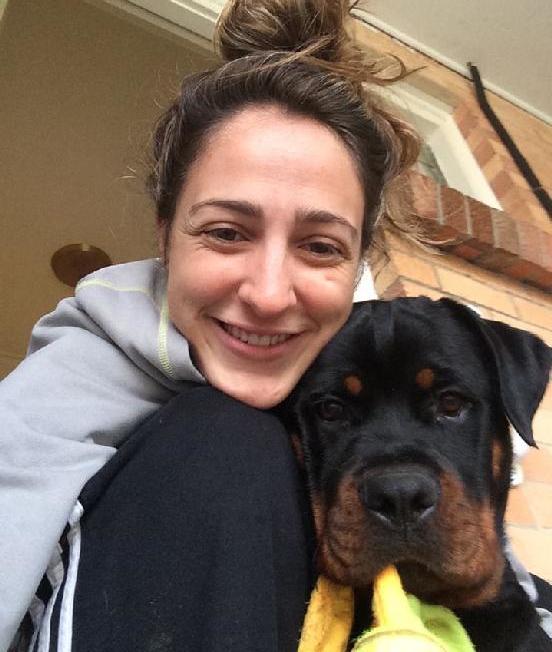
8 minute read
and retention rates can be improved
e q u i n e Dominance: The Horse’s Perspective
In this second of a two-part series, Dorothy Heffernan explains why humans may inadvertently give their horses mixed messages, and why dominant behavior in the world of the horse is simply a way to gain access to resources as needed
Advertisement
The concept of dominance is not exclusive to horses, or to herd animals (Hartmann et al., 2017). But it is not quite what we think it is. It is not a way of keeping other animals in line. It is not a way of determining where other animals go and what they do. It is not a way of deciding who is the queen or king, or who follows whom. To understand what it is, we need to look Horses have evolved as herd animals, so will trade off exclusive access to resources like food, water, © Can Stock Photo / Melory not at what we want from horses, but what horses shelter and mates for safety in numbers. want for themselves. Horses have evolved as herd animals, meaning that they trade off exclusive access to resources like food will lose his companions. The exception is a stallion, who can use food, water, shelter and mates with the fact that there is safety in num aggression against competitors (who are not members of his own bers. You are more likely, as a horse, to be able to reproduce and pass group) because he wants them to go away and stay away. Even then, on your genes if you can confuse your main predators with numbers. they often don’t, returning again and again to try to gain access to
Herd members are joined with an invisible elastic thread that holds mares. Within his own group, a stallion needs the mares and foals to them together and they cannot allow the elastic to stretch so much that stay near him but he cannot use aggression or force to achieve this; he it breaks through aggression and causing fear. In a natural setting, a needs the mares and foals to want him there. horse who consistently uses fear and aggression to gain resources like
Proximity vs. Distance
Behaviors Humans Want That May Go Against a If we translate our requirements of horses into how they interact with
Horse’s Natural Instincts in a Given Situation each other, we realize that our need for our horse to maintain “proximity” • • • • • • • • • • • • • Horse to approach rather than run away from us. Horse to stay, rather than run away from us. Horse to walk when we walk, trot when we trot. Horse to accept separation from conspecifics. Horse not to resist unpleasant/painful procedures. Horse not to direct aggression at us. Horse to display affection in a way acceptable to us. Horse not to defend food resources against us. Horse to eat what we consider appropriate. Horse not to eat what or when we say not to. Horse not to mate unless we allow. Horse not to run when fearful. Horse to allow us in his personal space. is much like a stallion with his family group. We need him to stay close and not feel the need to run away. The more the stallion chases, the more likely the mares and foals will distance themselves. The more they distance themselves, the higher the chance another stallion will lure them away. At the same time, we need “distance.” We don’t want the horse crowding us. Just as with family groups, we need him to stay attached to us as if there’s an invisible thread joining us and, just as with a family band, if we use fear or aggression to move him away, we risk the connection being completely broken or, at least, very damaged. Because we don’t always properly think through our definition of dominance, we may use it in a way that means we’re actually working and training in a way that’s incomprehensible to the horse, all the while thinking that he understands. For example, if we are so agonistic that he wishes to distance himself or defend himself, we may contain him so he
cannot escape. If he then finds nowhere to go, so crowds in on us, we may use even more agonistic behavior to move him away. As such, we signal constant “go away and stay away” messages, all the while expecting him to stand quietly in close proximity to us. We are the masters of mixed messages; as a result, if this is our understanding of dominance and leadership among horses, it risks leading us to expect the provision of completely opposite behaviors!
Hierarchy
In reality, dominant behavior in the world of the horse is a way of gaining and maintaining access to valuable resources without breaking the elastic connection between herd members. It is a way of reducing the risk of injury and lowering the stress — and, according to Linklater et al. (1999), the resultant impact on health — of constant aggression.
Horses do not understand the concept of a hierarchy; they only know, for each familiar horse in their group, whether that particular horse will or will not attempt to contest a particular resource. Horses do not engage in dominance behaviors to “move the feet” of another horse for no particular reason – that would be a costly waste of energy.
A horse has the ability to drive another horse away from something he wants, but in a normal herd environment they won’t direct the other horse to a specific place. He just wants the horse to go away from his (or her, obviously) food, mate, foal or particular friend. He has no way of saying, “Go and stand over there and don’t come back until I say so.” Equally, there is no dominant behavior that can result in a horse standing in close proximity to another horse until told to leave. Proximity is through preference, not dominance.
A horse who is very thirsty may use a dominance display to gain preferential access to a water hole. But that’s it. He gains access, he drinks and he leaves. He will not remain to guard that water against all incomers, because by doing so, he loses access to friends, mates and food. Nor will a horse guard access to grazing or browsing, because by being on guard and using aggression, he will use up valuable energy he hopes to obtain from the food.
What Are Affiliative Behaviors?
Mutual grooming (allogrooming). Food sharing. Space sharing. Tail swishing (cooperative insect removal). Sharing breath. Resting head on other horse. Sucking and comfort behaviors. Licking. Nickering.
Horses vs. Humans
Horses, in practice, carry a constant profit and loss account around with them. They want to do the best they can at minimal cost. We, on the other hand, may expect them to expend a lot of energy for, from the horse’s immediate point of view, no benefit. They don’t think in terms of “submission now means guaranteed food later.” Rather, they may perceive that they are being made to run when it would be more sensible to walk, or they are being made to stay in one place when it would make sense to move around foraging.
This is where human demands can fall short. If we choose to use agonistic behaviors in the belief that we are making ourselves leaders and respected, in reality we are stretching the elastic connection to breaking point while moving further away from the affiliative and affectionate behaviors that are the glue between herd members (Cozzi et al., 2010). Those of us who live and work with horses must bear in mind that we have more than one training strategy open to us and we can choose one that builds the bond we want through creating a history of rewarding interactions. At the same time, we will be developing a set of cues that gains us the behaviors we want to see. If we work towards an understanding where a horse knows and wants to respond to the signals for “move away from me,” “stand close to me,” or “follow me” because he knows these signals are predictors of reward, we will end up with a horse who wants and chooses to be with us without fear, conflict or uncertainty. n
References
Cozzi, A., Sighieri, C., Gazzano, A., Nicol, C., & Baragli, P. (2010). Post-conflict friendly reunion in a permanent group of horses (Equus caballus). Behavioral Processes 85 185–190 Hartmann, E., Christensen, J., & McGreevy P. (2017). Dominance and Leadership: Useful Concepts in Human–Horse Interactions? Journal of Equine Veterinary Science 52: 1–9 Linklater, W.L., Cameron, E.Z., Minot, E.O., & Stafford, K.J. (1999). Stallion harassment and the mating system of horses. Animal Behaviour 58: 295-306
Resource
Heffernan, D. (2020, September). Rethinking Dominance. BARKS from the Guild (44) 48-49
Dorothy Heffernan is a Scotland, U.K.-based psychologist who applies her knowledge of learning, cognition and neuroscience to help horse owners improve their horses’ lives through a changed approach to management, training and environment. She uses a force-free approach to training and enjoys making science fun and relatable. Since 2013, she has written the blog Horses Under Our Skin to help people understand why their horses behave the way they do. She is an endorsed trainer of the World Bitless Association and helps horse owners transition to bitless riding using positive reinforcement techniques. In addition, she works with horse, pony and donkey guardians using an evidence-based approach to resolve behavior issues from handling, riding, transporting and husbandry problems. She has been a chartered member of the British Psychological Society for nearly 20 years.











